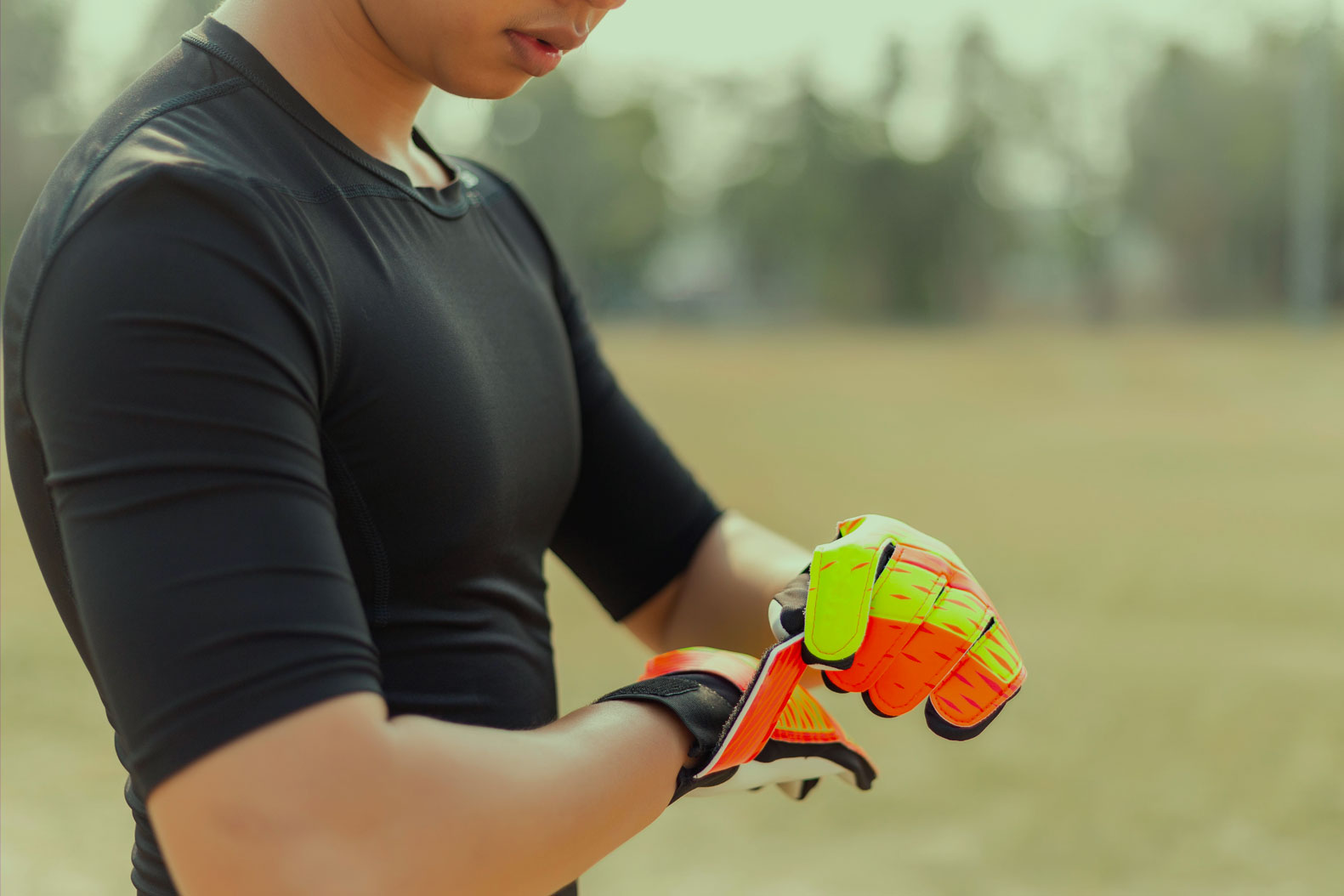
The pre-match routines of top goalkeepers: each has their own method
Antoine Roex, Keeper In Motion – 1 May 2025
Before every match, professional goalkeepers like Thibaut Courtois, Manuel Neuer, or Alisson Becker follow specific routines to reach their peak performance. These preparations, combining physical, technical, and mental exercises, are essential to optimize their performance from kickoff. Depending on their playing style, physique, or role within the team, each goalkeeper develops their own method of preparation. Behind every decisive save is a routine planned down to the smallest detail, often in close collaboration with goalkeeper coaches and fitness trainers.
Thibaut Courtois: Precision at the service of confidence
Thibaut Courtois, the Belgian goalkeeper of Real Madrid, places great importance on technical repetition before matches. His warm-ups include short reflex drills and lateral diving sequences to refine his footwork. He also practices with balls thrown at various speeds to calibrate his trajectory reading. Additionally, he performs dynamic stretching exercises to enhance flexibility without compromising reactivity. Mentally, Courtois visualizes likely game scenarios, strengthening his concentration. This methodical approach enables him to enter the pitch with solid confidence and meticulous preparation. He also carefully manages his hydration and nutrition routine in the hours leading up to the match. Everything is designed to allow him to feel in a state of complete fluidity when facing attackers.
Manuel Neuer: Anticipation as second nature
Manuel Neuer, a pillar at Bayern Munich for years, relies heavily on anticipation and game reading. Before each match, he analyzes opposing attackers’ habits to adjust his positioning. His warm-up focuses on quick distribution drills and aerial interventions, reflecting his role as a “sweeper-keeper.” He also works on eye-hand coordination using reaction balls to sharpen his reflexes. Neuer integrates passing sequences with his defenders to reinforce communication and synchronization. This preparation helps him reduce uncertainties and confidently intervene at crucial moments. He places significant importance on his posture and body alignment, increasing his effectiveness in one-on-one situations. His analytical approach makes him formidable at anticipating even the most subtle movements of opponents.
Alisson Becker: The balance between calm and explosiveness
Finally, Alisson Becker, Liverpool’s and the Seleção’s last line of defense, prioritizes a balanced approach between mental calm and physical explosiveness. His warm-up includes breathing exercises to stabilize his heart rate, facilitating clear decision-making. He then moves on to diving drills and quick footwork exercises to maintain optimal explosiveness. Alisson also works extensively on communication with his defensive line, practicing game scenarios to strengthen cohesion. This routine helps him remain calm under pressure while staying ready for swift, decisive interventions. He also takes time to mentally refocus away from the bustle of the locker room. This ability to psychologically isolate himself from external stress is one of the secrets behind his consistency at the highest level.
Personalized routines for optimal performance
Each elite goalkeeper develops a routine tailored to their physical and mental needs. Courtois emphasizes technical precision, Neuer focuses on strategic anticipation, and Alisson balances mental and physical aspects. These specific preparations result from years of experience and continual adaptations. They highlight the importance of individualized preparation for achieving excellence in the demanding role of goalkeeper. By adapting routines to their unique characteristics, these goalkeepers maximize their performance and impact on the field. Other goalkeepers, such as Gianluigi Donnarumma or Mike Maignan, follow similar logic, developing distinctive preparations that blend athletic power and technical agility. Ultimately, these routines are not static; they evolve with seasons, injuries, and players’ psychological maturity.
Conclusion
A goalkeeper’s pre-match routine isn’t just about a few dives on wet grass. It reflects complex, highly personalized preparation built on experience, analysis, and introspection. Whether through mental visualization, explosive drills, or controlled breathing, every detail matters to enter the field fully prepared. Courtois, Neuer, Alisson, and many others demonstrate that being a goalkeeper is as much about mental rigor as physical readiness. Behind every spectacular save lies a science of detail, an invisible ritual to the general public but indispensable for elite athletes. These routines inspire and remind us that at the highest level, nothing is left to chance.
References :
- Gardien de but : échauffement d’avant match – nosotros fc
- Gestion de la Pression pour les Gardiens de But : Comment Garder son Calme Sous Pression
- Les clés de la gestion du stress pour les gardiens de buts
- Plonger dans l’esprit et la technique du gardien de but professionnel
- 5 exercices de gardien de but pour un entraînement complet – Adidas
